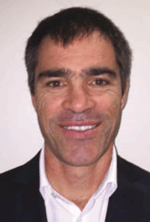Australia – how do we compare as an exploration destination?
Matthew QuinnIHS Markit, 221 St Georges Terrace, Perth, WA 6000, Australia. Email: matthew.quinn@ihsmarkit.com
The APPEA Journal 59(1) 120-133 https://doi.org/10.1071/AJ18044
Submitted: 6 December 2018 Accepted: 22 January 2019 Published: 17 June 2019
Abstract
A country’s competitiveness as a destination to conduct oil and gas exploration and production operations can be assessed through analysis of key metrics including discovered volumes, new field wildcat success rate, average field size, discovered volumes per new field wildcat, fiscal terms, sanctity of contract, regulatory burden and civil society risk. When compared globally, Australia ranks very high for aboveground risk factors, well for discovered volumes and discovered volumes per new field wildcat but sits towards the lower end of the dataset for fiscal terms. When assigning each metric a score on a scale of 1–10 and appropriately weighting and combining them to produce one overall score for each country, Australia currently ranks fourteenth for offshore and sixth for onshore. Historically, Australia’s rankings have been relatively consistent and have not dropped below twentieth since 2006. Conducting this analysis at a basin level allows the introduction of ‘time to onstream’ and ‘yet to find’ as additional metrics. Of the Australian immature basins, the McArthur Basin has the highest ranking; and for moderately mature basins, the North Carnarvon Basin tops the list.
Keywords: Amungee North West 1, Bonaparte Basin, Browse Basin, Canning Basin, Cooper-Eromanga Basin, Deep Water Gulf of Mexico, Dorado 1, fiscal terms, Gippsland Basin, Guyana, Guyana Basin, McArthur Basin, new field wildcat, North Carnarvon Basin, Otway Basin, Papuan Basin, Pazan 1, Perth Basin, Roebuck Basin, Senegal, Senegal (MSGBC) Basin, Yakaar 1, yet to find, Zagros Fold Belt, Zoher.

Matt Quinn has over 15 years of experience in the resources industry, including 10 years with IHS Markit working on the Australasia and North-west Europe datasets. He spent three years with Woodside in offshore Mauritania and Greater Enfield development teams and four years on the Western Australian goldfields. Matt has a Bachelor of Science (Hons.) from the University of Adelaide and is a member of SEAPEX and PESA. He currently works with IHS Markit in customer support. |
References
IHS Markit (2018a). E&P Database (EDIN). Available at www.ihsmarkit.com.IHS Markit (2018b). Fiscal and Aboveground Risk Database (PEPS). Available at www.ihsmarkit.com.
IHS Markit (2018c). Vantage. Available at www.ihsmarkit.com.
IHS Markit (2018d). Companies and Transactions. Available at www.ihsmarkit.com.


